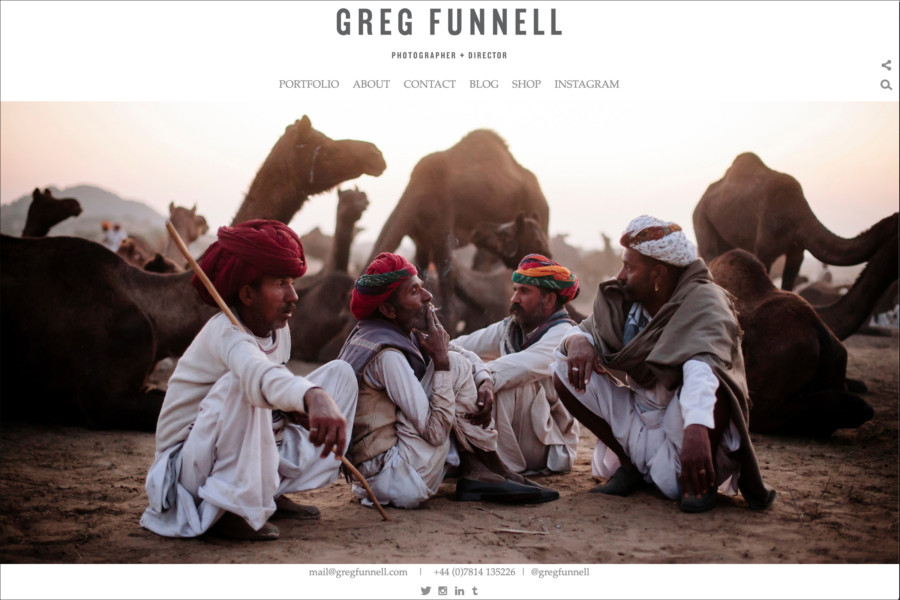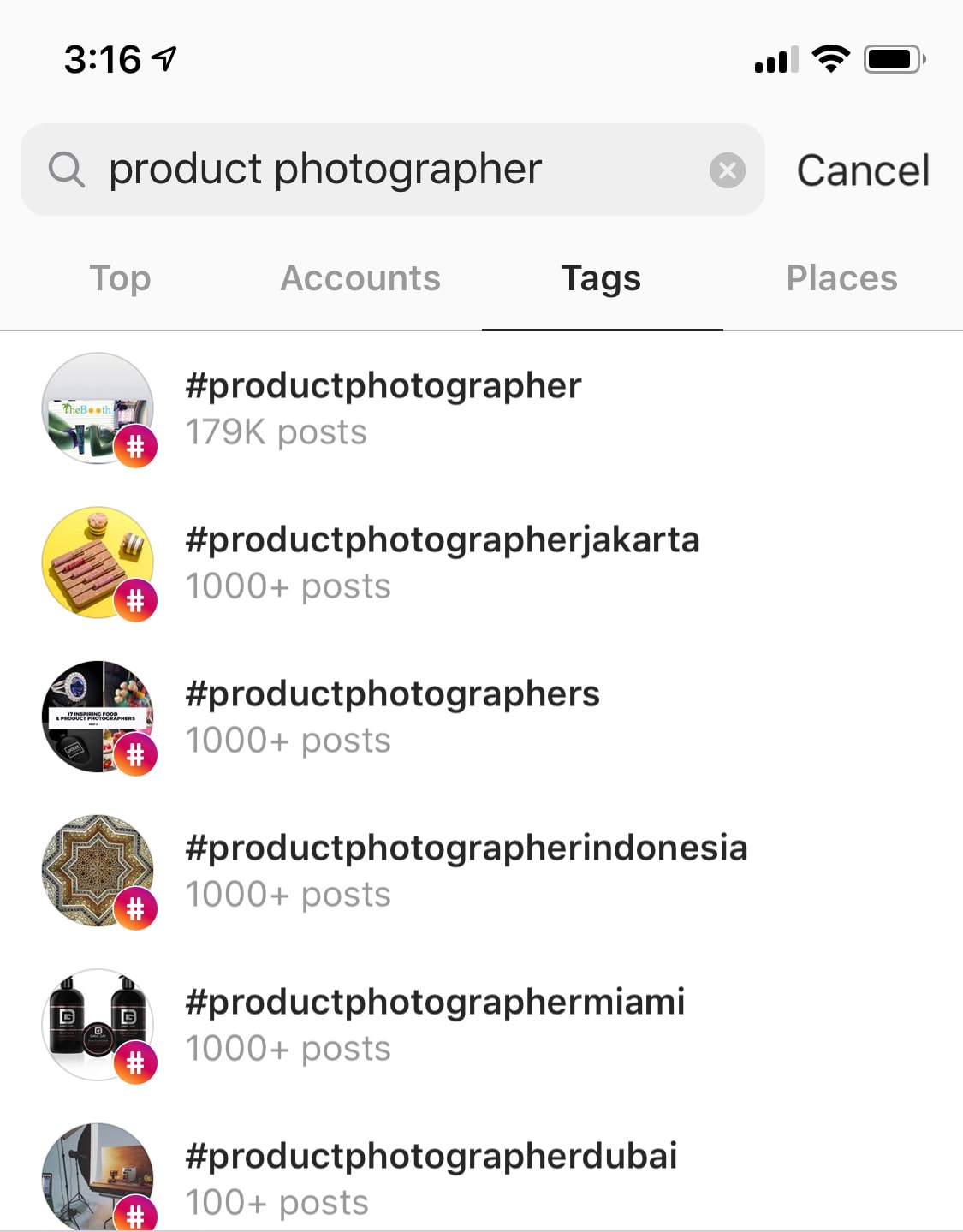Share
Do I Still Need a Photography Website in 2019?
Before the rise of social media and the ubiquity of apps like Instagram, photographers established and flexed their brands through their personal w...

Before the rise of social media and the ubiquity of apps like Instagram, photographers established and flexed their brands through their personal website and blog. The photographer website supplanted the printed portfolio, for the most part, offering photographers a way to showcase their work with a remote audience of photo editors, customers, and fans.
As Facebook took over our lives in the early 2010s, we encouraged photographers to set up business pages. “Separate your brand from your personal profile!” was our rallying cry. But a few algorithmic changes later, photographers began to understand they were beholden to Facebook, and couldn’t reliably control whether their followers saw their updates without paying for the privilege.

Instagram provided a few years of respite with a serialized newsfeed (e.g. newest content at the top), and photographers chased another virtual goldrush. Instagram’s discovery tools were non-existent in their first few years, and manually promoted photographers were able to amass tremendous followings. But after Facebook acquired the property and influencers came to dominate the ecosystem, photographers were once again left scratching their heads.
Rare is the professional photographer who can “just take pictures.” The landscape has become much too competitive while the barriers to entry are non-existent. Savvy marketing has propelled no-name photographers into social media stars. And while they might not be getting rich, they’ve certainly diversified their income streams with a variety of workshops, Lightroom presets, ad revenue, and even the occasional photo!
That is to say that it’s impossible to survive as a pro photographer without a marketing plan – identifying both a target audience as well as marketing activities specific to that audience. There’s no point in growing a social media presence if your bread and butter is high-end jewelry photography because your customers aren’t going to find you there. Similarly, there’s point in assembling a high-end portfolio if you make your money teaching at photo workshops.
Which brings us back to the website.
My company builds websites for photographers, so I’m not a disinterested party. But let me try to explain the relevance and advantage of having a website whether you’re a photographer, restaurant or any other business.
Discoverability & SEO
Here’s a test: Try to find a product photographer in your city on Instagram. Or try to find an article about a photojournalist in Syria you once saw on Facebook. While social media excels at compressing six degrees of separation, it’s awful for discovery. Instagram allows you to search by hashtags, but not multiple hashtags. The hashtag itself was invented in 2007 as a taxonomical device – inventor Chris Messina proposed it to help categorize content on Twitter – not as a search mechanism.

As implemented on Instagram, hashtags only perform literal searches. Misspellings and synonyms aren’t automatically searched. Content – both images and hashtags – that doesn’t meet Instagram’s terms and conditions are filtered. There’s no provision to filter by time or location (that’s a separate search).
On the other hand, internet search engines like Google have had 20 years of perfecting natural language search (e.g. “who is the best wedding photographer in Park City?”) along with filtering tools that increase the value of search results. Internet search engines are designed to scour and index all kinds of content. Social media apps lock you into walled ecosystems.
To be clear, the point of website SEO isn’t solely for people to search for your name and find your website. The value of SEO lies in is ability to drive traffic to your website with non-branded terms (e.g. Ventura architecture photographer), and this only happens when you have relevant copy on your website and you engage in link building.

Algorithm
SEO is based on an algorithm, as is the Facebook newsfeed. But photographers spent time (and sometimes money) building up followers on their Facebook business pages, only to find that their customers were no longer seeing their content after various algorithmic changes on Facebook.
Both Instagram and Twitter have conducted massive purges of suspected bot followers. And Instagram has been actively testing the hiding of likes. Both changes can be plausibly argued as improving customer quality, but it still renders the account owner as powerless to material changes.
Google SEO changes have affected traffic to websites in the past, but they don’t alter your customer email list or on-site conversion that you’ve built over time. On social media platforms, you are a customer and your “customers” are a by-product of the networking tools. But on your website, you own your customers. No algorithm can change your ability to communicate with them.
Brand control
Instagram and Facebook give extremely limited control for photographers to brand their presence on those platforms. The inclusion of a logo as a profile photo could hardly be seen as branding. A website, by contrast, allows photographers to choose from a sea of templates or develop your own look and feel. Large photos, small photos, persistent captions, color schemes, typography choices – they all play into a photographer’s brand. Enabling specific e-commerce choices is also an extension of brand. A few years ago, many cafés started using iPad-based Square payment processing. It became a “thing” that separates old school cash/swipe-based businesses from more contemporary counterparts that supported NFC-based payment (e.g. Apple Pay and Google Pay from your phone), emailed receipts, etc.

On a personal website, photographers aren’t beholden to design changes of a platform. No sudden color scheme shifts, no overnight layout changes.
Conversion
The ultimate goal of any marketer is “conversion,” which typically means a sale. But it can also mean collecting an email for a newsletter or getting someone to refer your business. A photographer website can support many different forms of conversion (e.g. online print sales, stock licensing, email collection) plus a variety of rich analytical packages that can improve your marketing decisions.
By contrast social media severely restricts how you can interact with YOUR clients, and sets arbitrary thresholds for accessing specific tools (e.g. Instagram’s “swipe up” feature requires 10k+ followers). Thus, we’re forced to use blunt solutions like “link in bio” or pay a fee for enabling online sales.
Workflow & Tools
As an aside to the marketing and control arguments, websites and their workflow tools allow photographers to manage their business of photography. For example, services like PhotoShelter provide cloud-based storage (that can handle your JPGs, PSDs, and RAW files), client distribution tools, and online sales.
With the right tool, a website is more than a marketing extension, it’s a business tool.
Websites are Useless Without Content
Having a website isn’t a marketing panacea. Maintaining a branded, online “brochure” is great for people who know your domain, but without strong textual content and regular updates, a website won’t drive traffic or conversion. And one could argue that a grossly outdated website could even have adverse effects on a business.
Do you need a photography website in 2019? If nothing else, maintaining your own website mitigates risk that a platform change will short circuit your ability to reach your customers, and for professional photographers, maintaining a website is a small price to pay.


